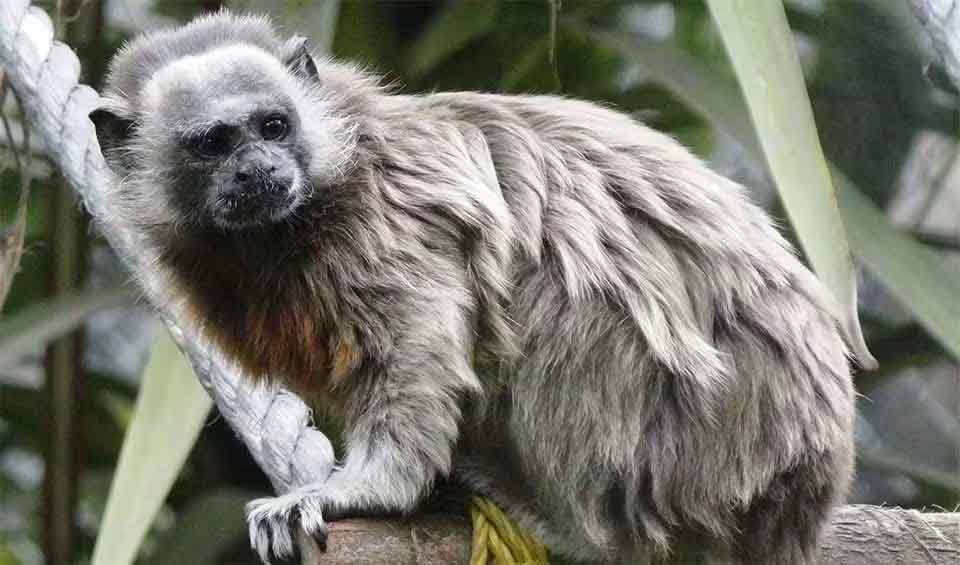This monkey, measuring between 23 to 30 cm (9-12 inches) in length, is a small but vital component of its ecosystem. The name “White-footed Tamarin” derives from the striking contrast between the white fur on its feet and the darker hues that dominate the rest of its body, creating a visual allure that sets it apart from other primates. Its long, bushy tail, not just an aesthetic feature, serves as a crucial tool for maintaining balance and agility as it navigates the complex arboreal landscape of its rainforest home.
Living in the dense upper canopy of the rainforest, white-footed tamarins exhibit remarkable social and familial bonds, forming tightly knit groups that emphasize cooperation and communal living. These family units are the cornerstone of their survival, facilitating effective foraging, predator avoidance, and childcare. The social dynamics within these groups are underscored by a sophisticated system of communication, which encompasses a variety of vocalizations such as chirps, trills, and clicks. These sounds serve multiple purposes, from coordinating group movements to expressing emotions and identifying individual members within the dense foliage.
As agile climbers, white-footed tamarins spend the majority of their lives amidst the treetops, showcasing an incredible dexterity and grace that belies their small size. Their diet primarily consists of fruits, supplemented by insects and other small animals, reflecting their omnivorous nature. This dietary preference plays a critical role in the health of their rainforest habitat, as these tamarins act as seed dispersers. By consuming fruits and traveling across their territory, they inadvertently aid in the spread of seeds, contributing to the growth and regeneration of the forest. This ecological function underscores the importance of the white-footed tamarin in maintaining the biodiversity and structural integrity of their environment.
Distribution
 Colombia
ColombiaAnything we've missed?
Help us improve this page by suggesting edits. Glory never dies!
Suggest an editGet to know me
Terrestrial / Aquatic
Altricial / Precocial
Polygamous / Monogamous
Dimorphic (size) / Monomorphic
Active: Diurnal / Nocturnal
Social behavior: Solitary / Pack / Herd / Troop
Diet: Carnivore / Herbivore / Omnivore / Piscivorous / Insectivore
Migratory: Yes / No
Domesticated: Yes / No
Dangerous: Yes / No




